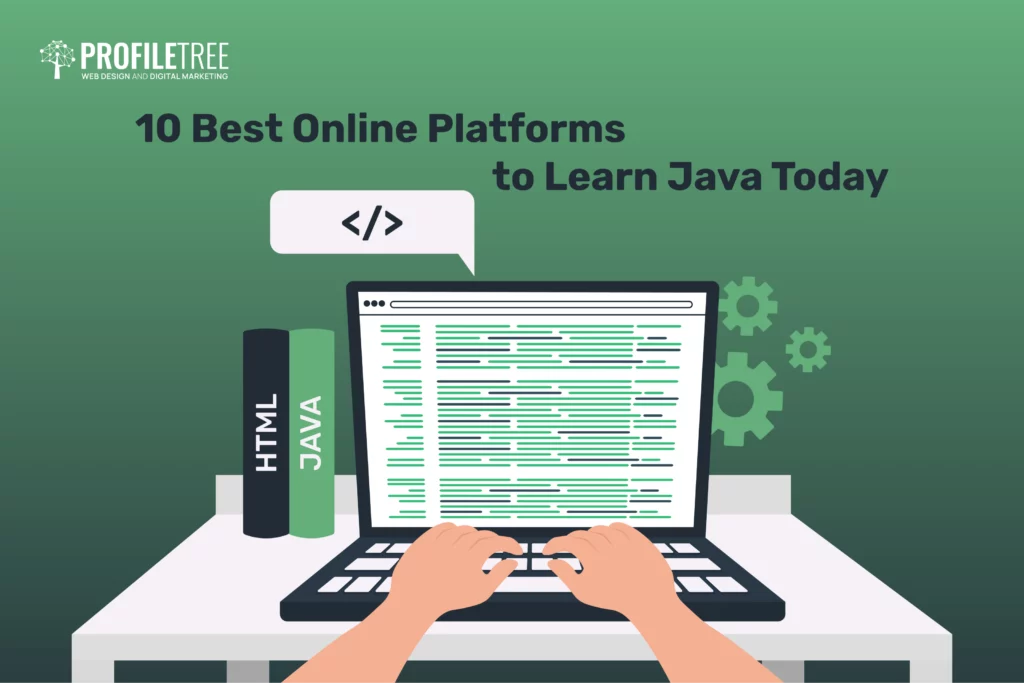In today’s rapidly evolving digital landscape, the adoption of artificial intelligence (AI) and machine learning technologies is not just an advantage but a necessity for businesses seeking to stay competitive. For small and medium-sized enterprises (SMEs), empowering staff with the knowledge to wield these powerful tools can be a game-changer. It’s crucial to understand the basics of AI and how it can drive efficiencies, foster innovative solutions, and, ultimately, boost your bottom line. By embracing AI, we can transform our workforce into a modern ensemble that is adept at navigating the complexities and harnessing the capabilities of these technologies.

Identifying existing skills gaps and designing bespoke AI training strategies is essential. This involves choosing the right mix of AI training tools, engaging employees effectively, and incorporating practical applications to cement their learning. Furthermore, it’s imperative to measure the effectiveness of the training provided and ensure ethical considerations are at the core of our AI initiatives. As we support more advanced AI training, we pave the way for enhanced collaborative learning that can propel our staff to new heights of technical proficiency and innovation.
Table of Contents
Understanding the Basics of AI

Before we discuss how to train your staff on AI tools and technologies, it’s crucial to have a solid grasp of AI fundamentals. This foundational knowledge is key to leveraging AI’s full potential in your business.
Defining AI and Its Importance
Artificial Intelligence (AI) encompasses a suite of technologies that allow machines to sense, comprehend, act, and learn with human-like levels of intelligence. Perhaps the most common type of AI that businesses are currently utilising is machine learning, where computers develop skills by processing large amounts of data. AI is transforming industries by enabling enhanced decision-making, increasing efficiency, and creating new products and services that were previously unthinkable.
AI Technologies Overview
Within the realm of AI, various technologies are at play. Generative Artificial Intelligence can create content, such as text and images, that can pass for human-made. Natural Language Processing (NLP) allows computers to understand and respond to human language in a meaningful way. Both of these are built on algorithms and data-driven approaches that underpin machine learning. It is the depth of these technologies that provide the capabilities for AI to outperform human benchmarks in numerous tasks.
Identifying the Skills Gap
In the fast-evolving landscape of artificial intelligence, ensuring that your staff is proficient with AI tools is crucial. Identifying where skills are lacking is the first step towards building a workforce capable of leveraging AI effectively.
Conducting a Skills Gap Analysis
Step 1: Gather existing data – Review performance metrics and outcomes to determine current capabilities within your team.
Step 2: Engage with your team – Consult with staff to understand their self-assessed AI competencies and apprehensions.
Step 3: Benchmark against industry standards – Compare your team’s skills with those required for state-of-the-art AI utilisation in your field.
Step 4: Identify the gaps – Plot the differences between current competencies and industry benchmarks to spotlight precise areas for improvement.
Step 5: Develop a training plan – With the insights gained, formulate a tailored training programme to bridge the identified skills gap.
By systematically assessing your team’s stand and what skills they need to acquire, you can streamline AI adoption in your operations.
Utilising AI Tools Skills Gap Templates
Employing AI tools and skills gap templates can significantly simplify the analysis process. Templates provide a structured framework to:
- Categorise skills relevant to AI technology, ranging from basic literacy to advanced programming abilities.
- Rate proficiency levels among your staff to visualise the variance between existing and required expertise.
By using these templates, you ensure consistency in your evaluation process and gain a clearer vision for future training requirements. Navigating the Tech-Driven Future: How to Train Employees on Generative AI Tools discusses the importance of focusing on common skill gaps and providing targeted training.
Regularly revisiting the skills gap analysis and updating the templates will help you to keep pace with the dynamic field of AI.
How to Train Your Staff on AI Tools: Designing an AI Training Strategy
Creating a comprehensive AI training strategy is vital for upskilling staff and ensuring they’re proficient in the latest tools and technologies. The goal is to foster a well-trained workforce equipped to handle AI-driven projects with confidence.
Setting Training Objectives
To ensure the effectiveness of AI training, we first need to establish clear objectives. What exactly do we want our employees to achieve through this training? Do they need to be proficient in specific AI software like TensorFlow, or should they understand broader concepts like machine learning algorithms? For companies like TalentLMS, customisable training objectives are critical to address the unique skills gap in various teams. Consider creating SMART (Specific, Measurable, Achievable, Relevant, Time-bound) goals to guide the training process and measure its success.
Curating a Training Curriculum
Once our objectives are set, it’s time to curate a training curriculum tailored to meet these goals. This involves selecting the appropriate course material; platforms like Udemy can provide a plethora of courses suited for varying degrees of proficiency and specialisation. Our curriculum should:
- Include a range of resources from in-depth tutorials to hands-on workshops.
- Be designed to progress from fundamental concepts to advanced applications.
- Accommodate different learning styles with a blend of visual, auditory, and kinesthetic methods.
By ensuring that our training strategy is targeted and comprehensive, we can effectively prepare our workforce to utilise AI tools and technologies.
Choosing the Right AI Training Tools

In our quest to harness the power of AI tools and technologies effectively, selecting the right training tools is a pivotal step. The right tools can make a significant impact on how well our staff can utilise AI to its full potential.
Comparing Training Platforms
When evaluating training platforms, we need to scrutinise their features critically. Platforms differ widely in interactivity, content quality, and relevance to current trends. For instance, a platform like TalentLMS offers a comprehensive environment that blends traditional e-learning with the latest in AI training modules. Here, we lay out a table comparing key features of select training platforms:
| Feature | TalentLMS | Platform B | Platform C |
|---|---|---|---|
| Interactive Workshops | Yes | Yes | No |
| AI Tool Integration | Yes | No | Yes |
| Real-Time Collaboration | No | Yes | Yes |
| Custom Learning Pathways | Yes | No | Yes |
| Analytics and Reporting | Yes | Yes | No |
We should look for platforms that provide analytic tools to measure our staff’s progress and custom learning pathways to tailor the experience to their individual needs.
Implementing Generative AI Tools
Transitioning to the actual use of generative AI tools, like ChatGPT, warrants attention to how these tools align with our staff’s roles and responsibilities. Our training should cover specific scenarios where the use of generative AI can enhance productivity and creativity. We aim to empower our staff with the skills to operate these tools for tasks ranging from content creation to complex problem-solving.
To cement this knowledge, we organise interactive workshops that allow staff members to get hands-on experience with generative AI applications. The goal is to enable them to master the software through practical use scenarios that mirror their day-to-day work challenges.
Understanding that practical implementation is the crux of any training; our AI training regimen provides our staff with the structured, hands-on opportunities they need to become proficient with these state-of-the-art tools.
Engaging Employees in AI Learning
To ensure your staff stays ahead in the ever-evolving landscape of AI tools and technologies, it’s crucial to foster a work environment that emphasises continuous learning and leverages engaging methods like gamification. These avenues not only enhance skills but also keep your team motivated and invested in their development journey.
Promoting a Culture of Continuous Learning
Continuous learning is the backbone of innovation, especially when it comes to artificial intelligence. We encourage our staff always to be learning by providing access to the latest AI courses and technologies. It’s not just about occasional training sessions but a constant cycle of education, application, and reflection. Regularly scheduled catch-ups and progress evaluations ensure our employees stay on track and deeply engaged with their learning paths.
We’ve seen how fostering this culture leads to heightened employee engagement. As Stephen McClelland, ProfileTree’s Digital Strategist, observes, “When learning is embedded into our daily routine, the uptake of new AI tools becomes a habit rather than a hurdle.”
Gamification and Interactive Elements
Gamification transforms the learning process into an interactive experience, injecting fun and competition into AI technology training. We’ve seen this approach lead to higher levels of engagement, where employees actively look forward to training sessions. Here are some tactics we use:
- Leaderboards: These display progress and encourage a healthy level of competition among peers.
- Reward Systems: Points, badges, and certificates serve as tangible achievements that workers can earn and showcase.
- Interactive Workshops: These allow team members to experiment with new tools in real time, reinforcing their learning through direct application.
By embracing these elements, we find that even the most complex AI concepts become more digestible, and the hands-on experience drastically improves skill retention.
Incorporating Practical Applications

Training staff on AI tools and technologies can be complex, but by incorporating practical applications, we make the learning process immersive and relevant. We focus on engaging staff through real-world examples and hands-on simulations that prompt active decision-making and familiarise them with a variety of AI solutions.
Using Real-World Examples
We believe in the power of real-world examples to illustrate the potential of AI technologies in a workplace setting. By demonstrating how AI solutions have been successfully implemented in businesses similar to ours, we provide a concrete understanding of their impact on efficiency and growth. For instance, a case study may show how a company’s customer service was transformed by an AI-driven chatbot, leading to improved customer satisfaction.
- Case Study: AI Chatbot Implementation
- Objective: Improve customer satisfaction
- Action: Implement an AI-powered chatbot
- Result: Enhanced customer service efficiency and satisfaction
By analysing these cases, our staff can see the tangible benefits of AI and feel motivated to explore its applications within their own areas of responsibility.
Hands-On Simulations and Exercises
Simulations and exercises are crucial in our training because they provide a safe environment where our staff can learn through trial and error. We use a variety of decision-making scenarios to simulate real business challenges, allowing staff to test different approaches without real-world consequences. For example, a simulation might involve choosing the best AI solution for data analysis and seeing the immediate impact of that decision on simulated company performance.
- Simulation Exercise: Data Analysis Tools
- Goal: Select the most effective AI tool for data analysis
- Process: Trial multiple AI software options
- Outcome: Understand AI tools’ impact on performance metrics
This hands-on approach ensures that when our staff encounter AI technology in their day-to-day work, they are confident and competent in utilising it to its full potential.
Measuring Training Effectiveness
As we implement new training initiatives on AI tools and technologies, it is crucial for us to measure their effectiveness. This ensures that not only the knowledge is acquired but also appropriately applied, ultimately reflecting improved performance and return on investment (ROI).
Assessing Employee Progress
1. Knowledge uptake: To gauge if our staff are assimilating the knowledge imparted through AI training, we shall conduct regular assessments. These could range from quizzes to practical tests that reflect their understanding of the AI tools.
2. Skills application: Beyond theoretical knowledge, we need to observe how our employees apply what they’ve learned in real-world scenarios. Role plays, simulations or project assignments serve as excellent indicators of practical application.
3. Feedback mechanisms: Feedback is invaluable. We will gather data continuously from the participants throughout the training process using surveys and one-on-one conversations to fine-tune our approach and promptly address any gaps.
Evaluating AI Training ROI
Calculating ROI: The return on investment for AI training is not just a matter of financials; it’s about the value added to our business operations. To measure this, we shall look at several KPIs, including increased productivity rates, error reduction, and time saved due to automation.
Consider efficiency and costs: Calculating ROI requires us to consider both the cost-efficiency of training initiatives and the tangible business outcomes. By comparing these numbers before and after training, we can evaluate the financial impact of our AI training programs.
Ciaran Connolly, founder of ProfileTree, emphasises, “Effective training in AI tools isn’t just about upskilling. It’s a strategic move that reflects in every facet of business growth, from workflow efficiency to innovative product development.”
In summary, carefully assessing employee progress and rigorously evaluating the ROI are pivotal steps in understanding the impact of our AI training programs. These methods not only highlight the success of current initiatives but also pave the way for continuous improvement in our training strategies.
Addressing Ethical Considerations
As we introduce AI tools and technologies to our staff, it’s imperative that we uphold ethical standards, mitigate biases, ensure data governance and privacy, and remain compliant with legal frameworks. These factors are the cornerstone to maintaining the trust of our workforce and the wider community.
AI Bias and Discrimination
Why It Matters: AI systems can unintentionally perpetuate bias and discrimination if they’re not carefully designed and monitored.
Steps for Mitigation:
- Training: We must educate our teams on the nuances of AI bias. This means understanding how data can reflect existing prejudices and teaching methods to detect and correct for bias.
- Diverse Data Sets: Utilising a broad range of data can help prevent AI systems from developing skewed perspectives.
ProfileTree’s Insight: Ciaran Connolly, founder of ProfileTree, notes, “By prioritising diversity in our data and continuous learning in our teams, we turn AI from just a tool into a beacon of ethical practice.”
Data Governance and Privacy
Why It Matters: Protecting data privacy is not just about compliance; it’s about respecting the individual rights of our staff and customers.
Steps for Assurance:
- Policies: Implement robust data governance policies that align with regulations like GDPR.
- Education: Staff need regular training on data security best practices, reaffirming the importance of data privacy.
Our commitment to these ethical considerations sets the foundation for a trustworthy and secure AI-enabled work environment.
Supporting Advanced AI Training

Advanced AI training goes beyond basic tutorials, fostering an environment where employees can develop expertise in AI tools and technologies. Through targeted learning and development programmes, we support our staff in mastering AI-driven systems.
Mentorship and Coaching
We believe in the power of mentorship as a key component of advanced AI training. Each of our employees is paired with a mentor who has a deep understanding of AI applications. These mentors offer one-on-one guidance, ensuring learners can apply AI concepts in their daily tasks effectively. Through regular coaching sessions, team members receive support in troubleshooting complex issues and are encouraged to explore innovative uses of AI within their roles.
Reskilling for Advanced AI Capabilities
Reskilling is essential for keeping pace with technological advancements. We provide comprehensive reskilling programmes that equip our employees with the required skills to handle advanced AI tools. These programmes encompass a range of learning modules, from understanding machine learning algorithms to applying AI for data analysis. Our reskilling efforts concentrate on both theoretical understanding and practical applications, making sure our employees stay ahead of the AI curve.
- Identify skill gaps: We assess our employees’ current AI skills to tailor the reskilling programmes effectively.
- Flexible learning paths: We offer online courses, workshops, and hands-on projects to suit diverse learning preferences.
- Real-world application: Employees are given opportunities to work on actual AI projects, translating learning into tangible outcomes.
By fostering mentorship and investing in reskilling, we lay a robust foundation for advanced AI training within our organisation. Our learning and development initiatives are designed to support continuous growth and expertise in AI technologies.
Enhancing Collaborative AI Learning
In the fast-evolving landscape of artificial intelligence (AI), prioritising collaborative learning among employees is pivotal for cultivating an AI-literate team adept at leveraging AI tools for enhanced engagement and teamwork.
Facilitating Peer-to-Peer Learning
Through peer-to-peer learning, employees can share diverse insights and approaches to working with AI. We recommend establishing learning groups or partnerships wherein team members can exchange knowledge and practical experiences with AI applications. This cross-pollination of ideas not only fosters a supportive learning environment but also strengthens interpersonal skills pivotal to effective collaboration.
- Organise AI learning sessions: Schedule regular, informal meetups for staff members to discuss AI topics or challenges they’ve encountered.
- Create a shared knowledge base: Encourage teams to document useful AI insights and tools in a central repository that everyone can contribute to and access.
Integrating AI in Team Projects
Weaving AI into actual team projects can lead to substantive increases in both AI literacy and teamwork. For example, by utilising AI for data analysis, teams can more efficiently identify market trends and insights, paving the way for more informed decision-making.
- Assign AI-enhanced tasks: Incorporate AI tools within projects, e.g., using AI-aided design software for marketing materials.
- Reflect on outcomes: Ensure teams review and discuss the effectiveness of the AI tools post-project, understanding their impact on the team’s collaboration and project outcome.
“Embedding AI into the fabric of our teamwork allows us to achieve a symmetry between human creativity and machine efficiency,” shares Ciaran Connolly, founder of ProfileTree. This fusion propels businesses towards innovation and growth in the digital age.”
Frequently Asked Questions

As leaders in digital marketing and AI training, we understand the importance of equipping your team with the right skills and knowledge to harness the power of artificial intelligence. Here, we address the key concerns and queries you might have about training your staff on AI tools and technologies.
What strategies should companies use to upskill their employees in artificial intelligence?
We suggest identifying common skill gaps within your team and providing targeted training in these areas. It’s also vital to choose a training format that fits the subject, like interactive workshops for hands-on AI tools.
What are the core competencies necessary for a workforce to effectively utilise AI technologies?
Your employees need a combination of technical skills and effective interpersonal skills. The ability to understand and manage AI tools, along with communicating effectively and fostering teamwork, are critical for maximising the potential of AI in your company.
How can businesses ensure continuous learning and development for staff in the field of AI?
To ensure continual growth, businesses should develop a learning culture that embraces AI advancements. Regular updates to training programmes and encouraging self-directed learning are effective ways to maintain a culture of continuous development.
What roles do training modules and workshops play in equipping employees with AI skills?
Training modules and workshops are instrumental in providing hands-on experience and practical knowledge. They offer an interactive environment where employees can familiarise themselves with AI technologies and apply new skills in real-world scenarios.
What measures can be taken to assess and track the progress of staff training in AI?
Implementing assessments and setting clear benchmarks are crucial. Track your team’s progress through regular evaluations and feedback sessions, and ensure that training outcomes are meeting the business’s strategic objectives.
How can an organisation foster a culture of innovation to adapt to AI advancements?
We believe that encouraging a mindset of continual learning and curiosity is essential for fostering innovation. Organisations can create a supportive atmosphere by recognising and rewarding innovative ideas and approaches in incorporating AI into business processes.
As ProfileTree’s Digital Strategist Stephen McClelland says, “The adoption of AI is not just about technology; it’s about empowering people to think differently and innovate beyond traditional boundaries.”
By addressing these frequently asked questions, we aim to offer a robust foundation for businesses looking to integrate AI training into their employee development programmes, ensuring your team is well-equipped to meet the challenges of a tech-driven future.


